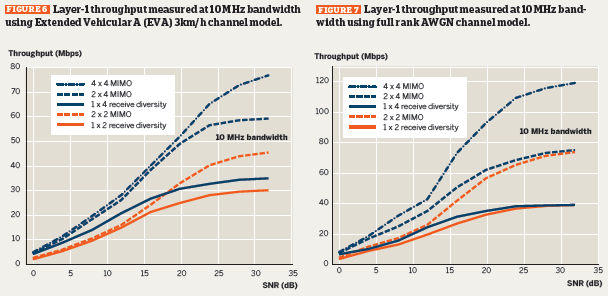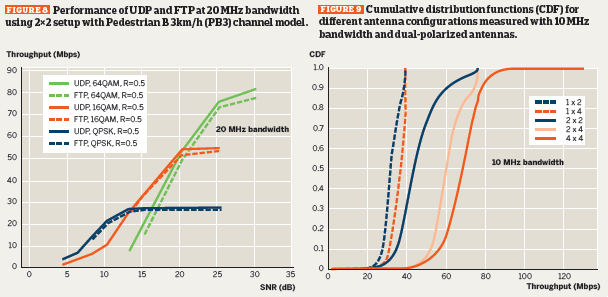|
LTE - Readings/Test Result
TCP Performance Degradation of In-Sequence Delivery in LTE Link Layer (pdf)
Hyun-Seo Park, Jae-Yong Lee and Byung-Chul Kim
Electronics and Telecommunications Research Institute, Daejeon, KOREA
Chungnam National University, Daejeon, KOREA
hspark@etri.re.kr, jyl@cnu.ac.kr, byckim@cnu.ac.kr
- When HARQ BLER (Block Error Rate) is 10% and HARQ failure rate is 0.1% as LTE protocol design, if DL (Downlink) HARQ RTT is 8ms and TCP RTT is 10ms, TCP throughput is seriously decreased up to only 36% of maximum bandwidth. And if DL HARQ RTT is 16ms and TCP RTT is 10ms, TCP throughput is decreased up to only 19% of maximum bandwidth.
- To alleviate this problem, we propose "out-of-sequence delivery" in LTE link layer in order to decrease TCP RTT while HARQ or ARQ in LTE link layer is working for error recovery. The "out-of-sequence delivery" can decrease TCP RTT up to end-to-end RTT. While "out-of-sequence delivery" makes LTE link layer design simpler, but its throughput gain is considerable
to the extent of 30% in average and 58% in maximum from our test results.
- If the RLC sub-layer receiver detects a gap in the sequence of the received PDUs, it starts a reordering timer assuming that the missing PDU still is being retransmitted in the HARQ protocol. HARQ failures appear if a maximum number of HARQ transmission attempts are exceeded or HARQ feedback NACK-to-ACK errors occur. When the timer expires, usually in a HARQ failure case, an RLC UM receiver
delivers SDUs to PDCP with a certain amount of loss. However, an RLC AM receiver sends a status message comprising the sequence number of the missing PDUs to the sender. The ARQ function of the RLC AM sender performs retransmissions based on the received status message.
- The TCP RTT of packets which are contained PDUs from the gap SN to SN which received in-sequence, are proportional to the t_Reordering timer which is generally set as maximum HARQ transmission number times of MAC HARQ RTT
Initial field performance measurements of LTE (pdf)
Jonas Karlsson, Mathias Riback
Ericsson


Using iPerf to Troubleshoot Speed/Throughput Issues (Link)
Posted by Andrew Tyler in Customer Service, SoftLayer, Technology, Tips and Tricks
- We were able to increase throughput from 29Mb/s with a single stream and the default TCP Window to 824Mb/s using a higher window and parallel streams. On a Gigabit link, this about the maximum throughput one could hope to achieve before saturating the link and causing packet loss.
- We will never get 100% out of any link. Typically, 90% utilization is about the real world maximum anyone will achieve. If you get any more, you'll begin to saturate the link and incur packet loss.
Stochastic Forecasts Achieve High Throughput and Low Delay over Cellular Networks (Link)
- Live Network Throughput is fluctuating in very wide range even in short time interval
- TCP turnaround time is fluctuating in very wide range even in short time interval
- Interactive Apps work poorly
- Possible solutions ?
|
|

